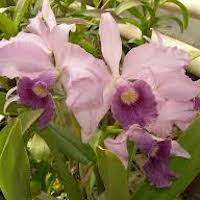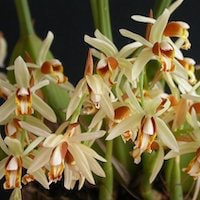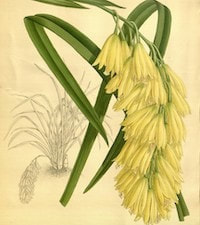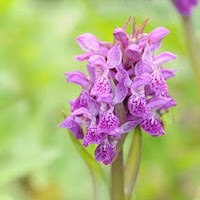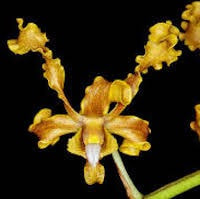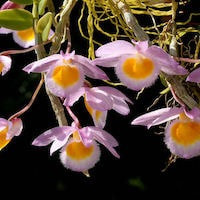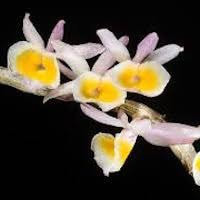Experience the Essence of Well-Being with Citrus Aromatherapy for Women
Scentopia has 120 wonderful orchid oils, and this one wins everyone's heart. This essential oil has scented notes of the following orchid varieties:
Cattleya Canhamiana 'Azure Sky': A hybrid of Cattleya mossiae and Cattleya purpurata, this orchid blooms in spring and autumn. It has a sweet fragrance in the morning and early afternoon. Breeders favor this orchid as it is vigorous in growth. Its petals are fragrant, light lilac-blue with veined margins, and the lip is trumpet-shaped, darker lilac-blue and veined in blue-violet, with a soft yellow center veined in purple.
Coelogyne trinervis Lindl.: Known as Ueang mak in Thailand, this orchid is considered sacred in some parts of Indonesian Borneo. The tuber is used to treat fractures and sprains in Thailand, dysentery and diarrhea in Myanmar, and constipation or indigestion in Nepal. Coelogyne trinervis contains coelogin, a compound that reduces intestinal spasms and supports its traditional use. Additionally, it is regarded as an aphrodisiac.
Cymbidium elegans Lindl. var. elegans Syn. Cymbidium longifolium D. Don: This orchid variety, known as Suocao Lan in Chinese, has numerous flowers on the rachis. Its lip lacks appendages. In herbal usage, salep made with this plant is used as a demulcent or emetic in India, and the fresh juice from its leaves is used to stop bleeding, particularly from deep wounds.
and more....
Cattleya Canhamiana 'Azure Sky': A hybrid of Cattleya mossiae and Cattleya purpurata, this orchid blooms in spring and autumn. It has a sweet fragrance in the morning and early afternoon. Breeders favor this orchid as it is vigorous in growth. Its petals are fragrant, light lilac-blue with veined margins, and the lip is trumpet-shaped, darker lilac-blue and veined in blue-violet, with a soft yellow center veined in purple.
Coelogyne trinervis Lindl.: Known as Ueang mak in Thailand, this orchid is considered sacred in some parts of Indonesian Borneo. The tuber is used to treat fractures and sprains in Thailand, dysentery and diarrhea in Myanmar, and constipation or indigestion in Nepal. Coelogyne trinervis contains coelogin, a compound that reduces intestinal spasms and supports its traditional use. Additionally, it is regarded as an aphrodisiac.
Cymbidium elegans Lindl. var. elegans Syn. Cymbidium longifolium D. Don: This orchid variety, known as Suocao Lan in Chinese, has numerous flowers on the rachis. Its lip lacks appendages. In herbal usage, salep made with this plant is used as a demulcent or emetic in India, and the fresh juice from its leaves is used to stop bleeding, particularly from deep wounds.
and more....
Download the guided mediation that works best with this Orchid fragrance oil
| women_citrus_essential_oil_orchi_00012.mp3 | |
| File Size: | 226873 kb |
| File Type: | mp3 |
Embrace Feminine Elegance with Refreshing Citrus Aroma
Contains Scented Notes of following in various proportions:
Native Singaporean Orchid notes: Cattleya Canhamiana 'Azure Sky'
|
Cattleya Canhamiana 'Azure Sky' - Hybrid of Cattleya mossiae x Cattleya purpurata- Used in Citrus 12 (Women) for Team building Perfume workshop
It blooms in the spring and the autumn. It has a sweet and docile fragrance in the morning and the first part of the afternoon. Its a breeders favourite as it loves to grow. Sepals and petals are very fragrant, with light lilac-blue with the petals heavily veined on margins. The lip is trumpet-shaped, darker lilac-blue and veined in blue-violet, with the center of the throat a soft yellow veined in purple. |
Therapeutic Orchid notes:
|
Coelogyne trinervis Lindl.
Thai name: Ueang mak It is sacred in some parts of Indonesian Borneo (Kalimantan) and here it was believed that the abundance of the rice harvest could be predicted by seasonal profusion of its flowers. Herbal Usage: In Thailand, the tuber is used to treat fractures and sprains. It is used to treat dysentery and diarrhoea in Myanmar whereas infusion of its pseudobulbs is used to treat constipation or indigestion in Nepal. This suggests that the pseudobulbs of the orchid may contain heat-labile and heat-stable compounds with opposing actions, as is the well-known case with Angelica sinensis. C. cristata contains coelogin (a 9,10-dihydrophenanthrene derivative) which has been shown to reduce intestinal spasms. The observation supports the Burmese herbal usage of the orchid. C. cristata is sometimes used to treat headache and fever in Nepal. Three species of Coelogyne are regarded as aphrodisiacs. Uniflorin, a steroidal ester, 4 phenanthrene derivatives, coelogin, coeloginin, coeloginanthridin and coeloginanthrin were extracted from this plant. The last four compounds possess the biological activities of phytoalexins and endogenous plant growth regulators. |
|
Cymbidium elegans Lindl. var. elegans Syn. Cymbidium longifolium D. Don.
Chinese name: Suocao Lan They have numerous flowers on the rachis. Lamellae on the lip are without any appendages. Herbal Usage: Salep made with the plant is used as demulcent or emetic in India. Fresh juice extracted from the leaves is used to arrest bleeding, especially from deep wounds. |
|
Dendrobium discolor Lindl. Syn. Dendrobium undulatum R. Br., D. elobatum Rupp., D. fuscum Fitzg.
Common Australian name: golden orchid Papuan names: Rigo twist, Moresby gold, Bensbach yellow. Herbal Usage: In Mackay, Queensland, aborigines prepared a poultice from young canes of D. discolor and used it to draw a boil. A liniment for ringworm was prepared with the juice of old canes. |
|
Dendrobium loddigesii Rolfe
Chinese names: Fenhuashihu (pink flower Dendrobium), Meihuashihu (beautiful flow- ered Dendrobium); Xiaohuangcao (small yel- low herb); huanchahu (ring-like hairpin) Fragrant flowers are borne singly, predominantly on leaf- less stems, profusely in April. It grows on trees or rocks in Guangdong, Guangxi, Guizhou, Yunnan and Hong Kong. 2 alkaloids isolated from this Orchids are inhibitors of Na+, K+-ATPase in the rat kidney. Moscatilin isolated from stem cell of this plant possesses strong antiplatelet activity. In addition to its antiplatelet action, it had potent cytotoxic effect on cancers arising from the placenta, stomach and lung but not on tumors arising from the liver. Herbal Usage: According to TCM, the stem benefits the stomach, produces saliva, nourishes the yin elements, and it is antipyretic. It is used to treat thirst, anorexia, dry vomiting, weak bodies and “muddy eyes. Chinese herbal physicians also use it to treat Type 2 diabetes. |
|
Dendrobium polyanthum Wall ex Lind. syn. Dendrobium primulinum Lindl.
Chinese name: Xibianshihu (fine petal Dendrobium), Baochunhuangshilan (harbin- ger of spring yellow Dendrobium) Thai names: Ueang Sai Naam Pueng, Sai lueang, Sai prasat, Myanmar name: Thinn kyu kyu Phytochemistry: It contains alkaloids of the indolizidine type, and a high content of hygraine. It also has tetrahydroanthracene was assessed for cytotoxic activity against two human tumour cell lines (A549 and HL-60). Herbal Usage: Whole plant is used to treat burns, eczema and paralysis |
Other scent note
Scentopia Library Reference ingredient
Plum - Check details at Scentopia's scent library
Join Scentopia's wonderful orchid scent crafting, fragrance tour, bridal shower or corporate team building which includes perfume making onsite and offsite, beach activities and more. We also serve primary school learning journey, secondary students and pupil on industrial excursions. Know more about our orchids perfume bar or therapeutic orchid scents and other wellness aromas. Conatct Perfume workshop or book a scent crafting session here.
